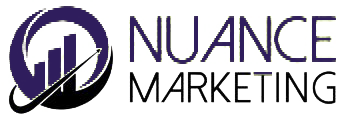Page speed, also known as website loading speed or page load time, refers to the amount of time it takes for a web page to fully load and become interactive for a user when they visit a website. It is a crucial aspect of user experience and can significantly impact a website’s success, including its SEO ranking, user engagement, and conversion rates. Faster-loading web pages provide a better user experience and are more likely to keep visitors engaged and satisfied.
To improve page speed::
- Optimize Images and Media:
- Compress images: Use image compression tools to reduce the file size of images without significantly affecting their quality.
- Choose appropriate file formats: Use modern image formats like WebP, which offer better compression without compromising quality.
- Lazy loading: Implement lazy loading for images and videos so that they load only when they come into the user’s viewport.
- Minimize HTTP Requests:
- Reduce the number of requests by combining CSS and JavaScript files.
- Minify CSS, JavaScript, and HTML files to remove unneeded characters and spaces.
- Use CSS sprites to combine multiple images into a single file, reducing the number of image requests.
- Leverage Browser Caching:
- Set appropriate cache headers to instruct browsers to cache certain assets, like images, CSS, and JavaScript files.
- When a user revisits your site, these assets can be loaded from their local cache instead of being downloaded again from the server.
- Content Delivery Network (CDN):
- Use a CDN to distribute your website’s assets across multiple servers worldwide. This reduces server load and decreases latency, resulting in faster loading times for users.
- Reduce Server Response Time:
- Optimize your server and hosting environment to minimize the time it takes for your server to respond to requests.
- Use a fast and reliable web hosting service.
- Eliminate Render-Blocking Resources:
- Move JavaScript files that are not essential for rendering above the fold to the bottom of the HTML document.
- Use asynchronous loading for non-essential scripts.
- Minimize Redirects:
- Reduce the use of unnecessary redirects as they add extra HTTP requests and increase page load times.
- Optimize Above-the-Fold Content:
- Prioritize loading content that appears in the user’s viewport (above the fold) first to give the perception of a faster page load.
- Reduce Third-Party Scripts:
- Limit the use of third-party scripts and widgets as they can introduce delays.
- Only include essential third-party resources, and consider loading them asynchronously.
- Mobile Optimization:
- Ensure that your website is optimized for mobile devices, as mobile users may have different constraints and expectations regarding page speed.
- Regular Testing and Monitoring:
- Use tools like Google PageSpeed Insights, GTmetrix, or WebPageTest to analyze your website’s performance and identify areas for improvement.
- Continuously monitor your website’s speed and make adjustments as needed.
Improving page speed not only enhances user experience but also positively impacts SEO, conversion rates, and overall website performance. It’s an ongoing process, and regular optimization efforts will help maintain fast loading times for your website’s visitors.
